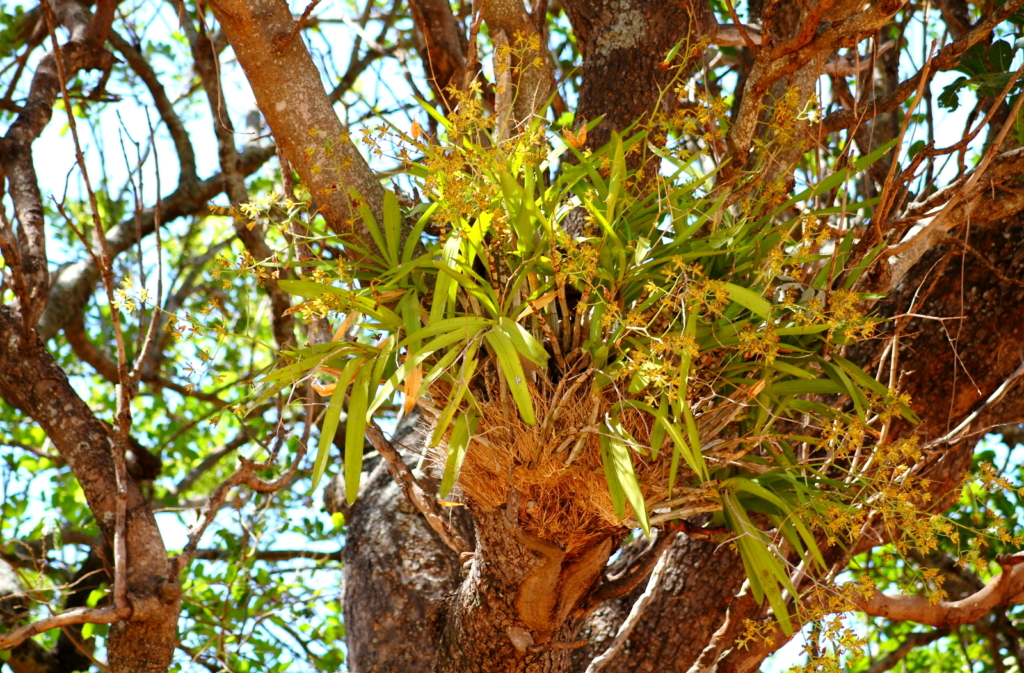Words and images by Megan Loftie-Eaton (Pridelands Ecologist)
There is another kind of leopard that lurks on WildArk’s Pridelands Conservancy. This leopard has spots but no teeth and spends its entire life up in the trees. It is the Leopard Orchid (Ansellia africana)!
Ansellia africana was named in honour of John Ansell, a British botanist, who discovered the first specimens in 1841 when he embarked on an expedition on the Niger River in West Africa. The Leopard Orchid is the largest of the epiphytic orchids here in South Africa and grows in spectacular clumps in trees in the subtropical areas of southern Africa.

This orchid is an epiphyte, which means that the whole plant, roots and all, grows above ground, attached to the branches of trees. The roots, which anchor the plant to the tree, are specially adapted to absorb water and nutrients very quickly. An unusual feature is the needle-like roots pointing upwards which form in a dense mass around the pseudobulbs and catch the rotting leaves and detritus upon which the plant feeds.
Leopard Orchids usually flower at the end of dry spells. However, they have a unique habit of flowering at any time of the year and several times a year if the conditions are right. When they do flower, it is a mass of yellow or greenish yellow blooms, lightly or heavily marked with brown/maroon spots. In the wild, plants live for a long time and can become very large; some estimated to weigh over a tonne!
This orchid is an epiphyte, which means that the whole plant, roots and all, grows above ground, attached to the branches of trees. The roots, which anchor the plant to the tree, are specially adapted to absorb water and nutrients very quickly. An unusual feature is the needle-like roots pointing upwards which form in a dense mass around the pseudobulbs and catch the rotting leaves and detritus upon which the plant feeds.
Leopard Orchids usually flower at the end of dry spells. However, they have a unique habit of flowering at any time of the year and several times a year if the conditions are right. When they do flower, it is a mass of yellow or greenish yellow blooms, lightly or heavily marked with brown/maroon spots. In the wild, plants live for a long time and can become very large; some estimated to weigh over a tonne!
Read more Pridelands stories here.
